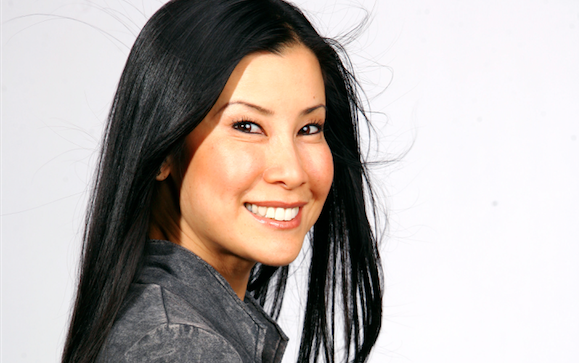The struggles of being a woman and seeking equality in the workplace is already difficult, so imagine trying to be a successful woman of color in the workplace? In the past, with so many industries that had Caucasian males dominating the higher ranks, many of us questioned whether we should even attempt to elevate ourselves to a leadership position. But if there was one thing we could agree on, it’s that we knew this attitude and mindset needed to change.
And that’s where the ColorComm Conference comes in. The ColorComm Conference (or C2 for short) is a yearly event that brings together women of color from around the United States. This is the ultimate business retreat where women in the communications industry can speak to one another, network with panelists, address and discuss issues that we face in the workplace today and much more.
At this year’s conference, which takes place July 29 to July 31 in Miami, Florida, journalist Lisa Ling will be featured as one of the panelists and as the keynote speaker at the ColorComm Circle Awards. We were lucky enough to get the chance to speak with her and ColorComm’s founder, Lauren Wilson.
Get to know Lisa and what the C2 Conference is all about in our interview below:
Audrey Magazine: You’ve had such an inspiring career as a journalist, host and author. When was the moment you knew you wanted a career in journalism?
Lisa Ling: When I was a kid, I wanted to find a job in television because I grew up without a lot of money. My parents got a divorce when I was very young and the television was my favorite babysitter. I thought that if I get on TV, maybe I could have a better life one day. But it wasn’t until I started actually working in TV, on my first show called Channel 1 News. It was a show seen in middle schools and high schools around the country, and it was a show that sent me all over the world so many times over. Some of the things I saw in my travels were so shocking and galvanizing. It propelled me to want to– not so much be on TV anymore– but to want to communicate stories. My desire became less about being on TV and more about communicating stories.
AM: What were some major challenges you faced while you strived to become a journalist?
LL: Some of the major challenges I’m facing, and something that [journalists] need to keep in mind, [is that] it really takes a big personal toll and it’s very unpredictable. It’s hard to maintain any kind of normal life. You’re always looking for what the next story is. You become mixed in to other people’s schedules. I think that has and always will be a big challenge that journalists face. I think that as a woman, there’s still so much inequity between men and women in so many professions. There are a lot of huge success stories out there, and I’ve been able to maintain a fairly successful career but relative to a lot of my male counterparts, there’s a big difference and that’s a big problem that the world of journalism faces across the board.
AM: How has being a woman of color, specifically an Asian American, affected your career and your career decisions?
LL: I don’t know that if it has given me either advantages or disadvantages honestly. I’d like to think that the job that I’ve gotten is because I’m a decent journalist, not because I’m Asian American or a woman. I don’t think that being Asian has been, in any way, a detriment. If anything, I think that it has been helpful, especially when I was in the early part of my career and traveling around the world. Having an Asian face and not a white, Caucasian face actually helped me to access a lot of the world that I was trying to pursue.
AM: What piece of advice would you tell young Asian American women who are thinking of a career in journalism and communications?
LL: I would tell young Asian American women to be persistent, to not allow yourself to compromise, not to be taken advantage of and to stand up for yourself. I think as women, we often feel so grateful to even get the opportunities that we have. I think the reason why I’ve been able to maintain a career over the years is because I would frankly do it for free. But at the same time, it’s really important that we, as women, and particularly Asian American women, do try to stand up for ourselves and do stand up for what we deserve in the marketplace.
AM: What was your most memorable or most rewarding moment?
LL: Oh gosh, that’s so hard to say. I feel so blessed that I’ve been able to work for so many different kinds of people and so many women. Working alongside Barbara Walters and Oprah, those experiences are just unparalleled. It’s kind of unbelievable to me that I could count those two women and so many others as mentors. I would say the opportunity to work alongside incredibly successful and powerful women has been really exciting, but at the same time, I’ve learned so much. Barbara Walters, who’s probably the most well-known, accomplished female journalist of our time, whenever she sees me, she doesn’t offer professional advice ever. The one thing she says consistently to me every time she sees me is “Don’t neglect your personal life.” I think that is something that she felt that she had to do in her career, and she didn’t want people who are in this profession and women who she cares about to make the same mistake that she has. So learning that from her has been valuable for me.
AM: What led to your participation in the ColorComm’s Conference this year?
LL: Actually, I was scheduled to participate last year, but I just started working for a new show on CNN, and so I had to cancel all of my talks because my production schedule is so unpredictable. So I’m excited to come back this year. I’m excited that it’s going to be in south Florida, and I love the opportunity to get a chance to speak to as many women of color as possible. I’ve always believed if women don’t stand up for each other, no one else would. Women are my favorite demographic to talk to.
AM: What is the most important message that you hope to instill with the Conference participants?
LL: My goal is to try to encourage people to really allow themselves to open their minds and try to be as less judgmental as they can. I’ve always believed that the more we know about each other, the better we are as human beings. I want to talk about a lot of the things I’ve experienced in the world and also here at home, and talk about how they affected and shaped my perception of people.
AM: What are some areas within the media that can still be improved upon regarding women?
LL: I think women need to start standing up for themselves and not feel like they are a lesser species because of their gender. A lot of it rests on the shoulders of men, but also the responsibility that women need to take the initiative to demand more. I think that there’s power in numbers and the more that we as women collectively start to demand what we deserve, the stronger we are.
AM: And now we speak to ColorComm’s founder, Lauren Wilson. Lauren, can you tell us the background of ColorComm and the C2 Conference?
Lauren Wilson: We are a membership organization for women of color and communications called the ColorComm Network. We’re in four cities and we have several hundred members from across the U.S. in our network. We actually started off as a luncheon series in Washington, D.C. in 2011. So we would have an executive level person speak to our group and her peers would be in the room. It would be a mix of mid-level, senior level, executive level women in communications. These luncheons are great, but we were looking for more formal opportunities to connect. This is an organization that focuses on mutually beneficial relationships. So often too, I go to panels where you notice that attendees are lining up to speak to the panelists, and they’re missing out on each other and they’re lining up for the panelists thinking that they’re the most important person in the room. You’ve heard some great remarks from panelists, but you didn’t get anything out of it necessarily. You weren’t able to exchange your cards in that way or really meet people like you. So these programs that we designed and developed were for people to collaborate, for people to speak their minds, to have the opportunity to get to know one another, to not always assume that the highest level person in the room is the person speaking. So that led to our conference where we are connecting women from across the country.
AM: What will participants gain by attending the C2 Conference?
LW: Oh, so much! First, from an outlook standpoint, you’ll gain professional development, you will gain resource industry knowledge, but more importantly, it will definitely feed your soul. People walk away with personal connections. People walk away with friendships. They walk away with business relationships. [You’re] not just sitting in a conference room, going to sessions and eating boxed lunch. You’re walking away with either mentors, business relationships, new friends, people who could help put you on panels, help nominate you for awards, get you more visibility in the industry. That’s what we focus on– advancing visibility within the communications industry.
AM: How can a conference like C2 help women of color in the industry?
LW: To break it down, number one, our focus is like a business retreat. The speakers that we have, 90% of them will stay throughout the conference. They won’t just speak and leave. What this conference does [is] allow you to have access to speakers, to have access to these women. You don’t have to feel rushed to get your pitch in. We really wanted to create an environment where women can be themselves, where it’s not title heavy, where you don’t feel out of place. It’s just a feeling of equality going to a conference like this.
AM: Can we expect more Asians/Asian Americans at the Conference?
LW: Of course! There’s going to be all women. The reason why it’s a Women of Color Conference is because this industry of communications, PR, marketing and advertising is not dominated by women of color. It’s dominated by Caucasian women and the leaders at the top are often white males. So, when you look at the environments that you’re in, you notice that there’s only a sprinkle of you there. And depending on the ethnicity you are, sometimes you’re not even represented. So this conference showcases an environment where women of color can utilize each other as resources. What we’re looking to do is see more examples like us so that we can get to the top. We have to be empowered by women who look like us so that we know that one day, we can get there.
To find out more information, visit the official website here.
Feature image courtesy of Keppler Speakers.






